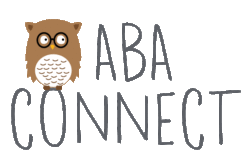How ABA Therapy Can Help Children with Autism
What is the Right Treatment For Autism?
With the right behavioral therapy, children with autism spectrum disorder (ASD) can use all their skills and abilities. However, every child with autism presents differently, and there is no uniform treatment for this condition.
Conventional treatments often focus on conditions that accompany autism, such as obsessive-compulsive disorder, epilepsy, and sleep disorders. While these treatments provide relief, they are not sufficient to help children develop skills for everyday life.
Treatments to address autism include medications and interventions such as speech therapy and verbal behavior therapy.
Applied Behavioral Analysis (ABA) therapy is another intervention treatment for autism. With ABA therapy, the aim is to increase acceptable behaviors and reduce adverse or isolating reactions as measurable objectives by implementing a reward system.
Many parents and professionals strongly advocate ABA therapy because of its success in treating autism. Additionally, recent meta-analyses show that the autistic brain has a different response to non-social rewards, which forms the basis of ABA therapy.
Some parents of autistic children are apprehensive about the application of rewards and consequences to teach behavior. Others don’t want to waste time with ineffective treatment.
How does ABA therapy help children with autism? This article looks at the history of ABA therapy, the treatment objectives, and how this therapy works.
Applied Behavioral Analysis (ABA) Therapy as Autism Treatment
The foundation of ABA therapy is the idea that autism is a combination of behavioral symptoms. Dr. Ivar Lovaas, the behavioral psychologist who first implemented ABA in 1987, believed that it is possible to teach social skills and behaviors to autistic children using rewards and consequences.
This approach turned out to be a success, and many of the children who received this initial version of ABA therapy underwent significant behavior changes. Over time, some even lost their autism diagnosis.
While the principles are the same, there are several significant differences between ABA therapy as we know it today and the initial approach. For one, modern ABA therapy no longer involves the use of punishment.
Some therapists also combine ABA therapy with additional treatments to improve emotional engagement and social interaction. At ABA Connect, we use natural environment teaching and discrete trial training (DTT) instructional methods to provide children with ABA therapy.
What is the Objective of ABA Therapy?
Parents who are considering ABA should know what their children can learn and what they cannot learn with this therapy.
The objective of ABA is to reinforce desirable behaviors. For example, ABA therapy can help children improve their language, communication, social skills, and focus and attention span. With ABA, a therapist can teach children skills such as getting dressed and brushing their teeth to become more independent.
ABA therapy also helps children to unlearn certain behaviors, such as aggression or obsessiveness. In some cases, children with autism are oblivious to danger. With ABA, a child can learn to approach moving vehicles, heights, and other hazards with caution.
This treatment doesn’t cover all symptoms of autism spectrum disorder. Through ABA, a child can learn to interact with others by shaking hands and responding to questions. However, the child is not likely to learn skills that involve inherent emotional connections, empathy, or abstract thinking with ABA therapy.
How Does ABA Therapy Work?
At the start of ABA therapy, therapists typically evaluate the child’s abilities and needs with discrete trial therapy, which consists of a stimulus, a response from the child, and feedback from the therapist in the form of a reward or correction.
During discrete trial therapy, the teacher will give the child instruction. If the child can carry out the direction without any problems, the teacher will reward them and move on to more complicated or challenging social tasks. If the child has difficulty with the instruction, the teacher will teach the new skill using repetition.
Discrete trial therapy provides a structured method for teaching new skills. A teacher can use this method to break down a complicated task into small, manageable steps. When a child can complete a task in a DTT setting, the therapist will move to a natural environment where the child must complete the same task successfully.
Learning a new skill during a DTT setting and practicing the same ability in the natural environment has proven to be highly effective. Children immediately start using the new skills they learned in the real world, which has less structure than the DTT setting.
Is ABA the Right Solution for Your Child?
ABA therapy has been around for a long time, and several developments have caused people to become contenders of this therapy. ABA dates back to a time when children with autism were institutionalized. Additionally, because of this treatment’s initial success, experimental therapists applied ABA in combination with questionable and unscientific practices, which caused more harm than good.
In the right setting, however, ABA therapy can help your child manage social interactions and daily life. There is evidence that ABA is an effective treatment for autism in:
- Studies, research, and findings by federal research institutes or under the auspices of the federal government
- Regulatory agency decisions
- Peer-reviewed literature
- Expert analyses by autism researchers
- Clinical practice guidelines that meet the criteria of the Institute of Medicine
In combination with discrete trial training (DTT) and natural environment teaching, ABA therapy can help children develop skills they can use outside of treatment.
At ABA Connect, we offer ABA therapy, DTT, and natural environment teaching. As Board Certified Behavior Analysts, we are experts in the field of behavior analysis and are in the best position to provide your child with successful treatment.
We also provide parental and caregiver support services. At ABA Connect, you will learn more about autism spectrum disorder, ABA as a treatment, and behavior management techniques to help your child at home.
When formulating an ABA treatment, we consider the needs of the entire family and provide regular feedback on your child’s progress.
To start your child’s ABA therapy or learn more about this intervention treatment, contact ABA Connect today.




Thanks for providing the detail of the therapies available for Autism. This is really very helpful.
This is a very insightful and informative comment. Thank you to the author for sharing this information.